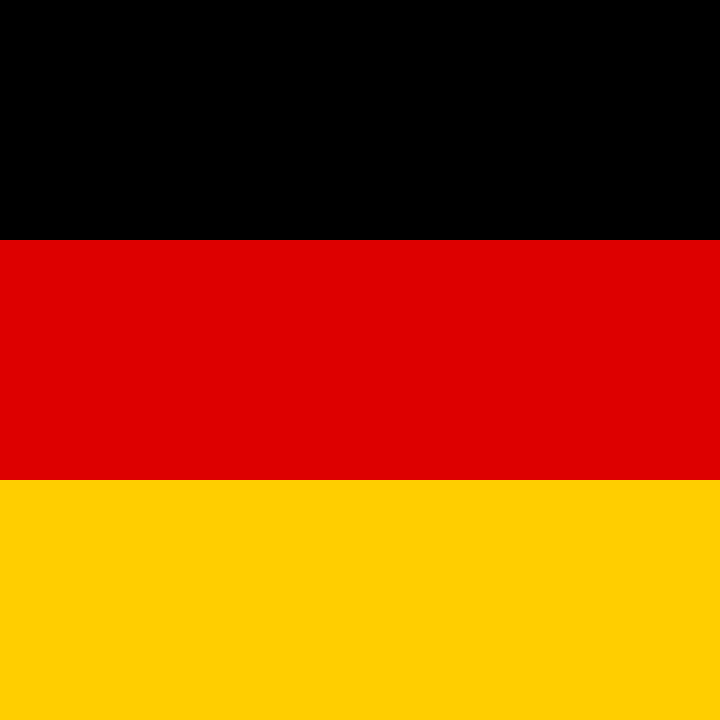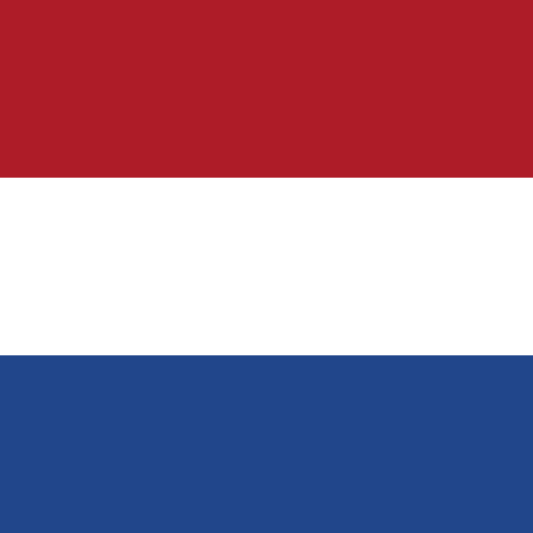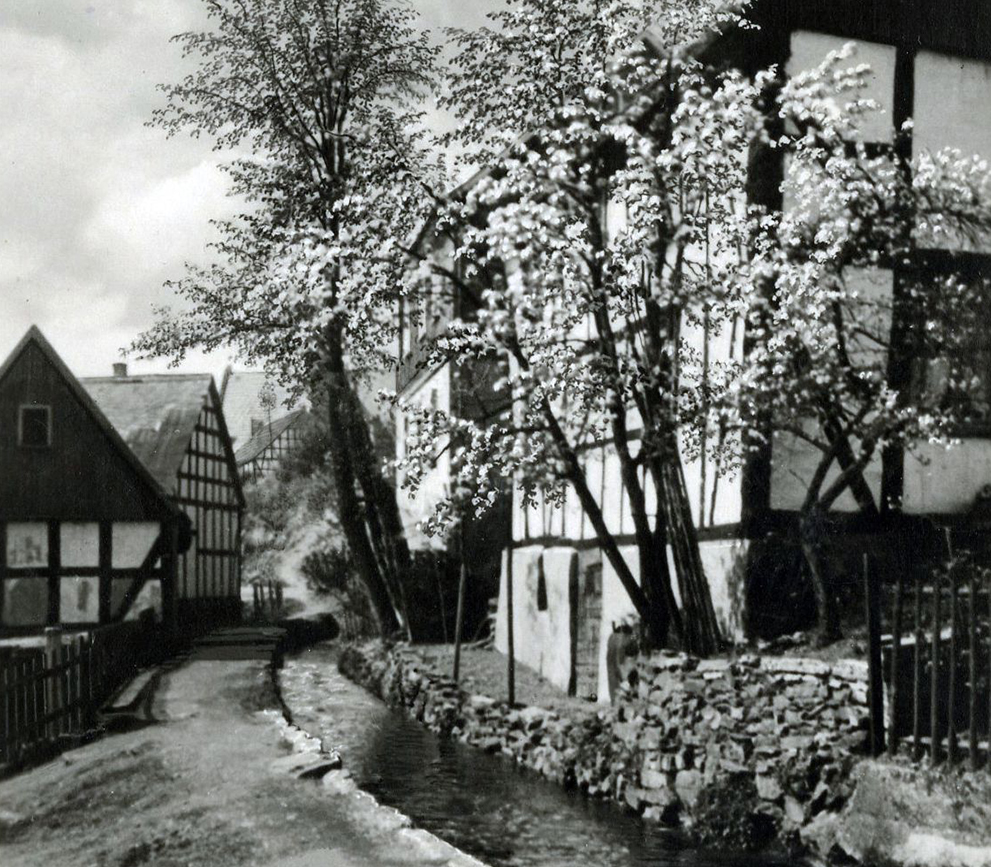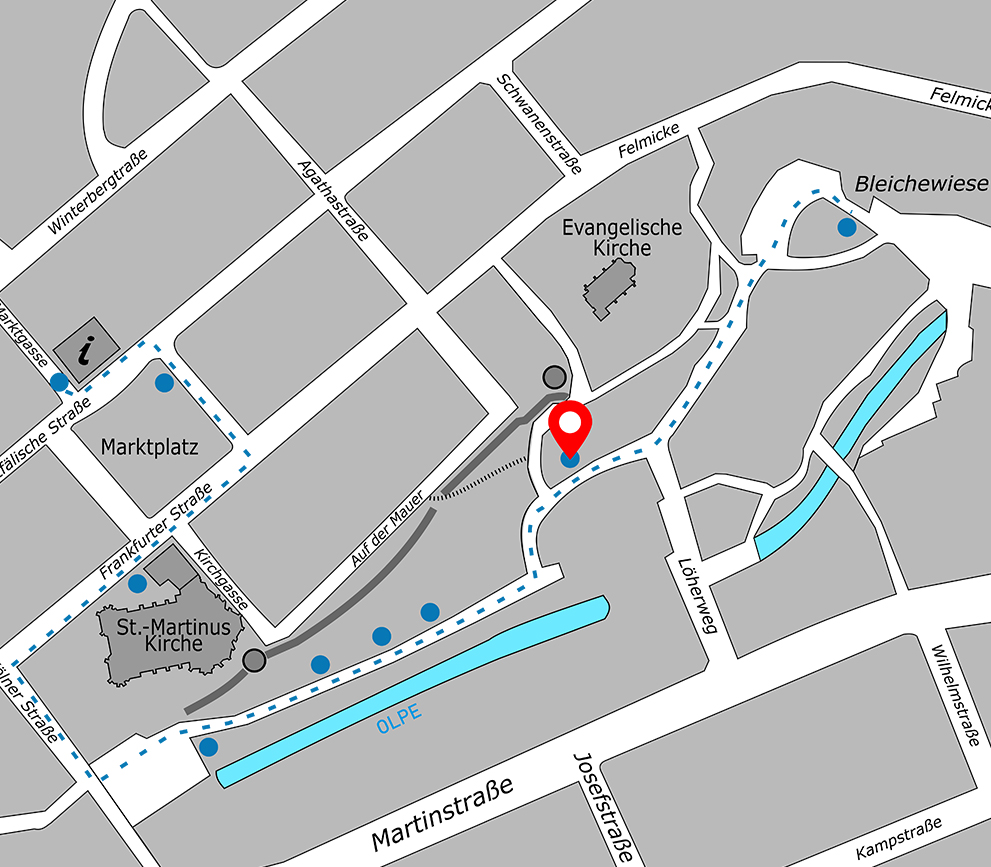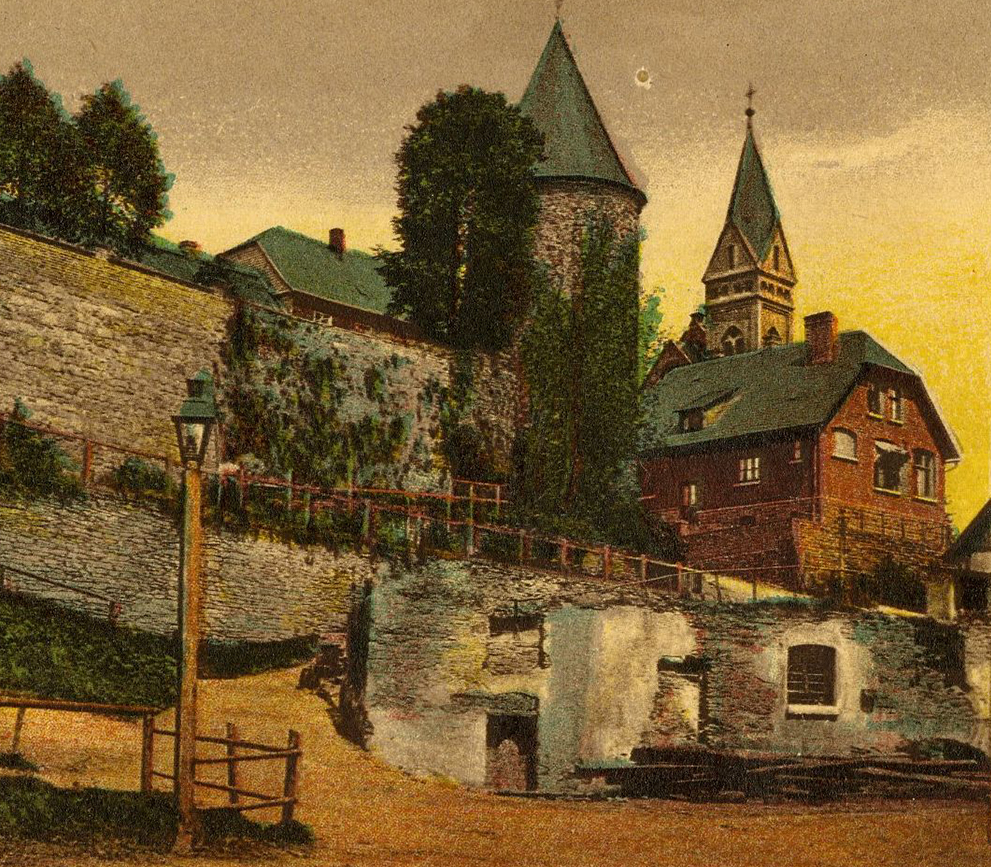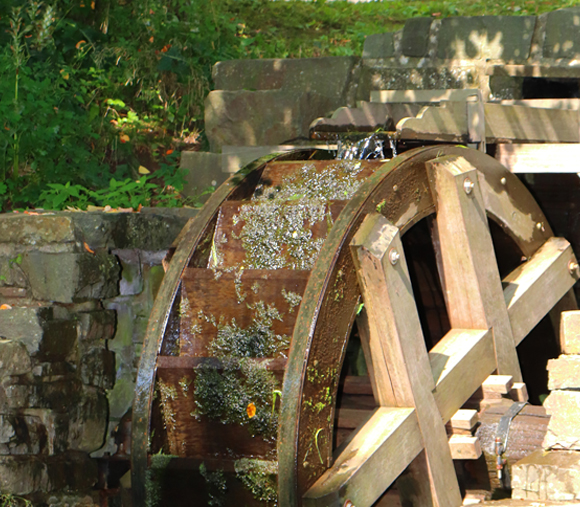
- Audio-Führung
starten - Hörspiel
für Kinder - Audio-
Führung für
Sehgeschädigte
13Upper mill
There is evidence that two grain mills were in operation in Olpe from the 16th century onwards. They were important for supplying the local population with flour, and also as a source of income for the town.
Here at the end of Weierhohl is the site of the Obere Mühle (upper mill), also known locally as the Oberste Mühle (uppermost mill). The Untere or Unterste Mühle (lower or lowermost mill) stood where Olpe’s cinema is located on Franziskanerstrasse today. Both town mills were supplied with the energy needed to drive the water wheels from the mill race, which can be traced back to 1502. The mill race was diverted from the Olpe behind the present day town hall, and ran parallel to the town wall and the Olpe through Weierhohl before flowing into the Biggesee further downstream. From 1580 onwards, the mill race was supplied with additional water from the Biggesee, which was fed into it through an aqueduct over the Olpe. This is now the site of a wooden bridge over the Olpe in Weierhohl. The mill race ditches were not filled in until 1967.
The mills were not only used to grind grain from the 19th century onwards, but also to drive machinery for other trades.
The upper mill burned down in 1902 and was not rebuilt. To commemorate it, a replica of the mill wheel was erected at the old site in 1993. The surroundings were also redesigned around the same time.
The mill wheel in Weierhohl measures about two metres across and is about 60 centimetres wide. The rotation of the wheel by the constant inflow of water not only has a visual, but also an acoustic effect on the viewer. An old millstone is a reminder of how grain was ground to produce flour in the past.
The mill wheel was restored extensively in 2017.
